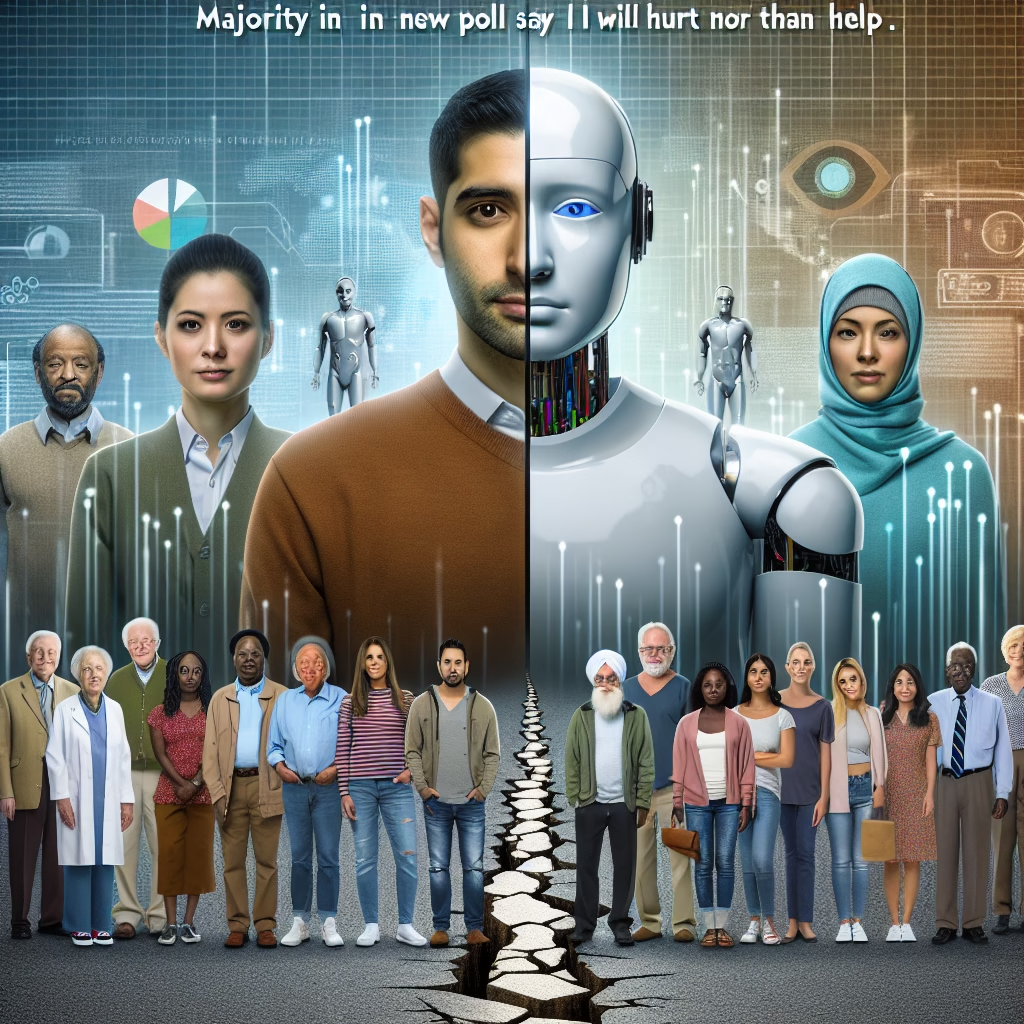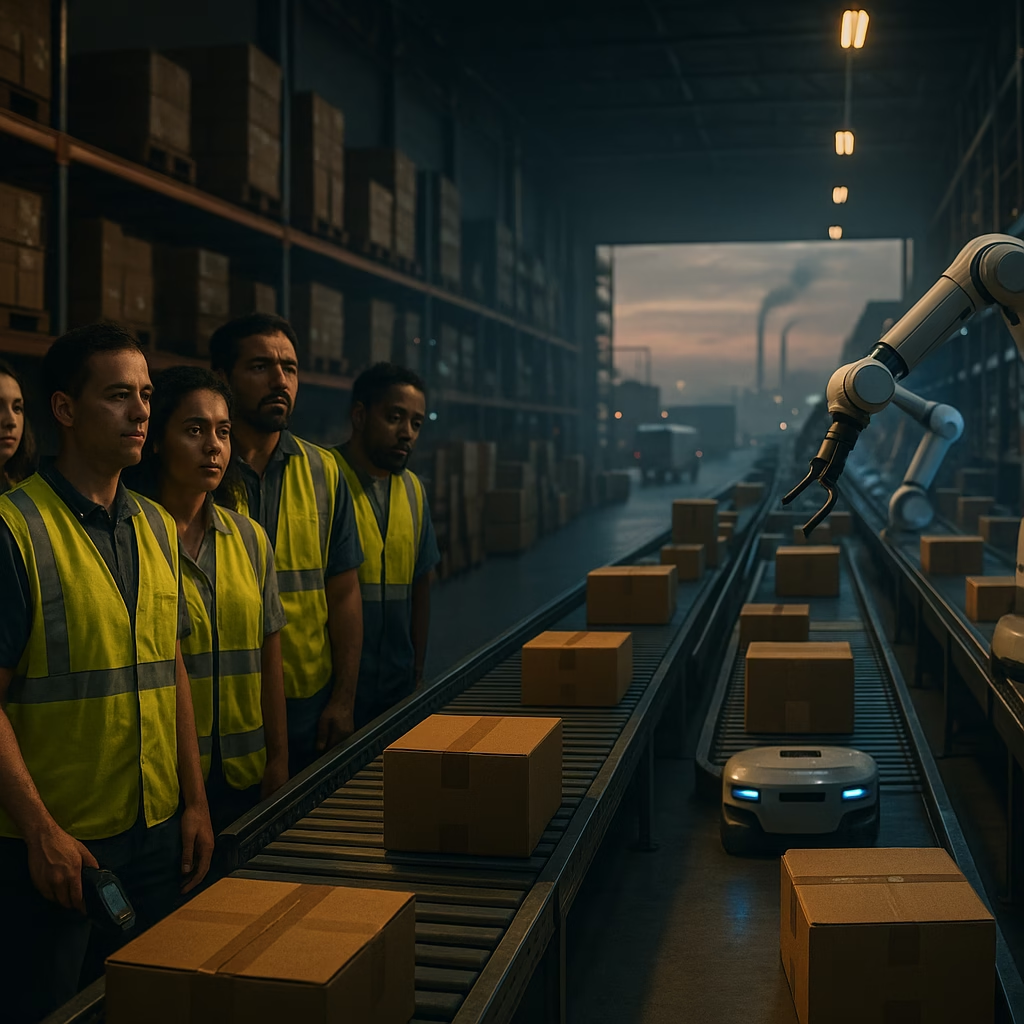AI’s Growing Impact Divides Americans, New Poll Finds
Introduction
As artificial intelligence (AI) continues to advance at a rapid pace, its presence in daily life is becoming increasingly inescapable. From voice assistants and facial recognition to predictive analytics and autonomous vehicles, AI is transforming industries and reshaping how humans interact with technology. However, not all citizens are embracing this change. A recent NBC News poll in partnership with the nonprofit organization Public Religion Research Institute (PRRI) reveals a deeply divided public opinion regarding the growing role of AI in society.
In this blog post, we dive into the latest findings, break down public sentiment, explore demographic divides, and discuss why Americans hold such conflicting views on the rise of AI.
Poll Highlights: Split Opinions Over AI’s Role
The NBC/PRRI survey shines a spotlight on how Americans feel about the use and impact of artificial intelligence. Across the board, the poll reveals a stark contrast between people who view AI as a benefit to society and those who consider it a potential risk.
According to the poll:
- 38% of Americans believe AI will do more harm than good.
- 35% of respondents think AI will be more helpful than harmful in the long term.
- 27% remain unsure about how AI will impact society overall.
The nearly even split between skeptics and optimists demonstrates a clear sense of unease among the public. Concerns about job loss, privacy, and the ethical use of data are heavily influencing public sentiment.
Widespread Uncertainty Prevails
One of the most telling stats from the poll is the 27% of Americans who are undecided. This segment represents a large group that may not fully understand what AI is or how it affects their lives but recognizes its growing presence. The findings indicate a need for better public education about AI and more transparency in how it’s being implemented across sectors.
Demographic Differences: Who Supports and Who Fears AI?
The NBC/PRRI poll found deep demographic divides in the way different groups perceive AI. Age, political affiliation, and education levels all play significant roles in how people view emerging technologies.
Age Gaps in AI Perceptions
There’s a notable generational divide on the topic of artificial intelligence.
- Adults aged 50 and older are more likely to view AI negatively, with 42% believing it will do more harm than good.
- Younger adults under 30 are more optimistic, with 42% believing AI will have a positive impact on society.
This disparity suggests that digital natives—those who have grown up with evolving tech—are more comfortable with AI tools, while older adults are more likely to approach it with caution and concern.
Partisan Differences
Just like many other hot-button issues in the U.S., perceptions of AI are also split along political lines.
- Democrats tend to be more optimistic, with 42% believing AI will be more helpful.
- Republicans are more skeptical, with 43% saying AI will do more harm than good.
This division could stem from differing trust levels in major tech companies, government oversight, and fears of job automation—topics that frequently surface in political debates.
Educational Influence
The poll also indicates that educational background influences opinions about AI:
- College-educated respondents are more likely to see AI in a positive light.
- Those with less formal education tend to be more wary and concerned about its societal impact.
People with more exposure to STEM disciplines or industries benefiting from automation may feel more connected to AI in a constructive way, whereas others might see it as a disruptor.
Why the Divide? Key Public Concerns Around AI
While AI holds the potential to revolutionize areas like healthcare, transportation, and climate change modeling, the general public’s hesitation often stems from key fear factors. According to further analysis from NBC and PRRI, Americans’ distrust in the advancement of AI often boils down to:
- Job Displacement: Automation and AI tech are already replacing many traditional jobs, especially in retail and manufacturing.
- Privacy Invasion: Surveillance tech, facial recognition, and data harvesting by AI systems amplify concerns about personal freedoms and digital privacy.
- Lack of Regulation: A perceived absence of ethical oversight and federal regulation adds to public distrust in the technology’s rapid development.
- Bias and Discrimination: AI systems trained on biased data can replicate and even amplify human prejudices, raising ethical red flags.
Many respondents feel that the government and corporations haven’t done enough to ensure AI development is equitable, secure, and beneficial for all segments of society.
How To Improve Public Confidence in AI
To bridge the growing divide in public opinion, it is essential to focus on education, policy, and corporate responsibility.
1. Transparent Education Campaigns
People fear what they don’t understand. Governments and tech companies should promote transparent, easy-to-understand educational initiatives that explain what AI is, what it can—and can’t—do, and how it’s being used in everyday systems.
2. Stronger Ethical Oversight
Implementing stronger regulatory frameworks is critical. This may include:
- Creating federal guidelines around data usage, privacy, and algorithmic transparency.
- Establishing independent watchdog groups to monitor AI developments.
3. Equitable Tech Development
Diversity and inclusion in AI development circles can reduce the likelihood of algorithmic bias. Including a wider range of voices ensures that AI technology serves everyone fairly.
Conclusion: A Nation at a Crossroads
Artificial intelligence is no longer a concept reserved for science fiction—it’s embedded in our lives and decision-making processes every day. While some Americans welcome its innovation and potential, others view it with trepidation. The NBC/PRRI poll has made it clear: the U.S. public remains sharply divided on whether AI is a force for good or a risk to our way of life.
Bridging that divide will require trust-building, responsible innovation, and proactive policy changes. As AI continues to evolve, the real question becomes not whether we should use it, but how we ensure it’s used responsibly for the benefit of all.
Stay tuned to our blog for more tech trends, expert commentary, and public opinion insights on how AI and other cutting-edge innovations are shaping the future.< lang="en">







Leave a Reply